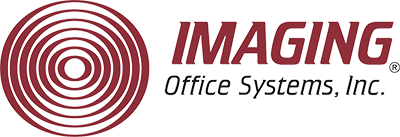As a senior executive with a say over what technologies and software your company will employ in its business processes, this is finally the moment to stop the insanity!
Stop the insanity of deciding in a “vacuum” what technologies your employees need to do their jobs better. Stop the insanity of reinventing your business processes to fit the software that was supposed to make your existing workflows easier, but instead introduced a whole new set of challenges and obstacles to overcome…which is really just new work—cleverly disguised as “onboarding” or “integration” activities—that never seems to end…
insanity of reinventing your business processes to fit the software that was supposed to make your existing workflows easier, but instead introduced a whole new set of challenges and obstacles to overcome…which is really just new work—cleverly disguised as “onboarding” or “integration” activities—that never seems to end…
Believe Your Employees—Not Software Company Hype
 Stop believing the hype that the next big thing from the biggest software companies with the biggest marketing budgets will be the thing that helps you reach new heights of efficiency and profitability. They didn’t design that software for you. They didn’t consult with you personally to spot where your unique business processes needed help.
Stop believing the hype that the next big thing from the biggest software companies with the biggest marketing budgets will be the thing that helps you reach new heights of efficiency and profitability. They didn’t design that software for you. They didn’t consult with you personally to spot where your unique business processes needed help.
Stop it. You can’t expect your employees to embrace new technology just because you tell them to. I mean, they’ll try. They don’t want to get fired. They’ll do their best to wade through the litany of additional challenges you created for them, but you won’t make their lives easier, and you won’t make their work better.
You will create frustration. You will create discontent. You will create dysfunction. You will create disloyalty. You will create reasons for your employees to seek work elsewhere. And you’ll create exactly the opposite of what you were trying to create—drops in productivity and profit.
Now, we’re not saying you should become one of those weirdos that eschew all types of technological innovation and advancement because it’s new and scary. Not at all.
What we are saying is we’ve reached a point in the sciences of business technology and software design where settling for anything less than consultative, human-centered design of new software integrations is woefully short-sighted.
To truly gain the benefits of new software and technology solutions, figuring out what you need and how it should be implemented must start with a comprehensive understanding of those who’ll be working with it—your employees. You need to know and consider what’s expected of them, their behaviors, their environment, their current work processes, and any and all other relevant human-related factors.
Designing solutions from this perspective is called human-centered design, and it is the methodology that Imaging Office Systems uses in all of our customer engagements.
What Is Human-Centered Design?
 Human-centered design is a creative approach to solution design driven by input from those you’re designing for.
Human-centered design is a creative approach to solution design driven by input from those you’re designing for.
According to Design Kit, an IDEO.org human-centered design learning platform, human-centered design involves 3 phases:
- Inspiration Phase: You work directly with the people, so you can understand what it’s like to be them and what they need and want.
- Ideation Phase: This is where it helps to have some creative muscle on your team to make sense of on-the-ground realities and spot opportunities where software and technology could make a difference. Then, you try to come up with every idea that could possibly work and then prototype and refine those ideas. Then, you ask your employees to test your ideas and prototypes in real-world scenarios, so you can understand what parts are working, what parts need additional development, and which directions you should abandon. You then continue working on refining the good ideas into tangible solutions.
- Implementation Phase: The last phase is the easiest. All the hardest work has been done. Now, it’s just a question of implementing what you now know has to be done.
We Focus on People, Their Ideas, and Their Desired Outcomes
Every business starts with someone that has a good idea. Without people, you’d have no business…and no business processes. Business processes are nothing more than systems of best practices and toolsets orchestrated by people to accomplish what people decide need to be done to have a successful business.
Technology itself doesn’t make you successful, but technology that’s good for your people is good for your business. Seems simple, right? Yet, so many organizations get caught up in the hype of big marketing promises and “keeping up with the Joneses” of their industries.
Think about the people you’re designing for first, and then consider the business and technical factors. By focusing on people first, you make possible the business success everyone in your organization desires…while avoiding the creation of new obstacles we talked about earlier.
